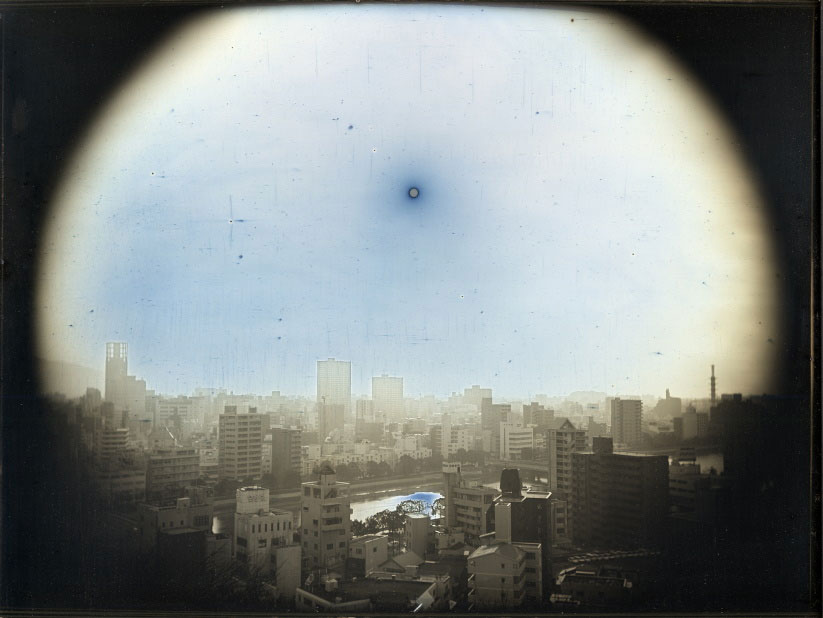
‘March 23, 2014, The sun at the apparent altitude of 570m in WNW, Hijiyama Park, Hiroshima’ (2014) from the series of ‘EXPOSED IN A HUNDRED SUNS’ by Takashi Arai, Daguerreotype, 19.3 x 25.2 cm, ©Camera Obscura.
The Daguerreotype at the End of Our World
- 18 January 2024
- 6:00pm – 7:00pm
- Daiwa Anglo-Japanese Foundation, 13 / 14 Cornwall Terrace, London NW1 4QP
- https://dajf.org.uk/event/the-daguerreotype-at-the-end-of-our-world
- +44 (0)20 7486 4348
- events@dajf.org.uk
- Tweet
Photographer Arai Takashi was born in the late 1970s in the Japan of the Cold War. During his youth he was exposed on a daily basis to representations of nuclear technology in films, anime, manga, and novels. The zeitgeist of the Atomic Age and its inseparable fears of an apocalypse formed the background sentiment of his childhood, while nuclear power plants mushroomed in the Japanese islands under the slogan ‘Atoms for Peace’. The 2011 Great East Japan Earthquake, followed by the Fukushima nuclear accident, was the first moment when his worst fears seemed to come true after Japan retreated into the amnesia of the bubble and post-bubble economy.
Since he started to make frequent visits to Fukushima, Hiroshima, Nagasaki, and other nuclear sites in Japan and the US, he has been considering the complex disparities between the different levels of narrative told by individuals, communities, and nations. Like Svetlana Alexievich (awarded the 2015 Nobel Prize in Literature), he asks how we can break out of our shells and expand our imaginations to encompass the invisible, global, and multi-generational threats of nuclear catastrophe.
In this talk, Arai will discuss his interdisciplinary approach to nuclear issues utilising the uncertainty of the daguerreotype, one of the earliest photographic techniques, and the instability and fragility of his body and mind as an individual artist.
About the contributors
Takashi Arai
Takashi Arai (1978-) is a visual artist and filmmaker based in Kawasaki, Tono and Berlin. Arai first encountered photography while he was studying biology at university. Tracing photography to its origins, he encountered daguerreotypes, and after much trial and error, mastered the complex technique. Since 2010, when he first became interested in nuclear issues, Arai has used the daguerreotype technique to create individual records—micro[1]monuments— touching on the fragmented reality of events in the past. Arai’s work has appeared in numerous exhibitions at venues around the world including the Museum of Fine Arts, Boston, the Mori Art Museum, Staatliche Kunsthalle Karlsruhe, and the National Museum of Modern Art, Tokyo. In 2016, Arai received the 41st Kimura Ihei Award for his first monograph, ‘MONUMENTS’ (PGI, 2015). His recent short film Oshira Kagami [The Mirror of the Oshira Deity] won a category prize at the 72nd Salerno International Film Festival in 2018. Arai’s works are held in the collections of the Smithsonian Institution, the Museum of Fine Arts, Boston, the National Museum of Modern Art, Tokyo, and Musée Guimet, among others. Since 2017, Arai has also been working as a researcher in interdisciplinary studies, contributing to papers including ‘Interdisciplinary Studies of Radiation Effects on the Everyday Life of Victims’ (National Museum of Ethnology) and ‘Anima Philosophica: Nature, Disaster, and Animism in Japan’ (Institute for Research in Humanities, Kyoto University).
